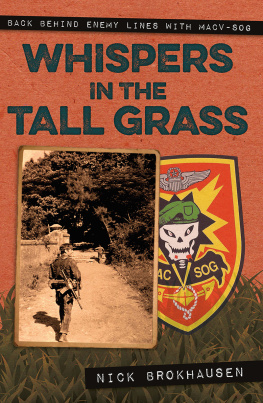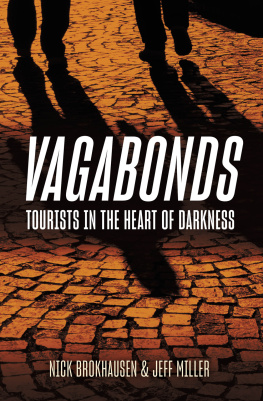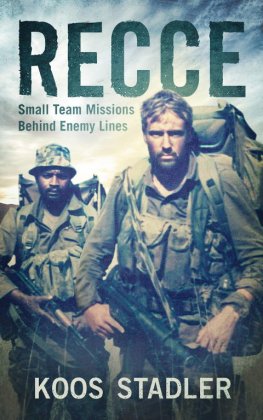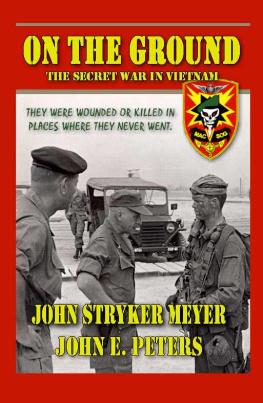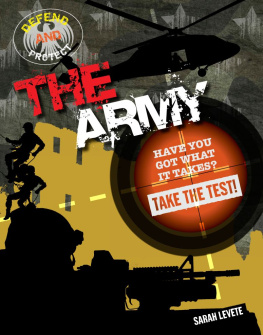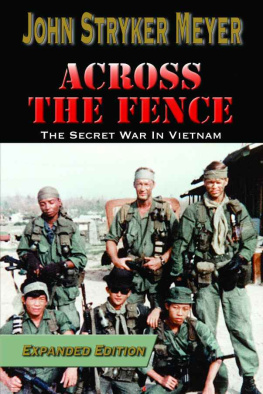Pagebreaks of the print version

WHISPERS IN THE TALL GRASS
NICK BROKHAUSEN
Published in the United States of America and Great Britain in 2019 by
CASEMATE PUBLISHERS
1950 Lawrence Road, Havertown, PA 19083, USA and The Old Music Hall, 106108 Cowley Road, Oxford OX4 1JE, UK
Copyright 2019 Nick Brokhausen
Hardback Edition: ISBN 978-1-61200-775-5
Digital Edition: ISBN 978-1-61200-776-2
Kindle Edition: ISBN 978-1-61200-776-2
A CIP record for this book is available from the British Library
All rights reserved. No part of this book may be reproduced or transmitted in any form or by any means, electronic or mechanical including photocopying, recording or by any information storage and retrieval system, without permission from the publisher in writing.
For a complete list of Casemate titles, please contact:
CASEMATE PUBLISHERS (US)
Telephone (610) 853-9131
Fax (610) 853-9146
Email:
www.casematepublishers.com
CASEMATE PUBLISHERS (UK)
Telephone (01865) 241249
Email:
www.casematepublishers.co.uk
Id like to have two armies, one with lovely guns, tanks, little soldiers, staffs, with distinguished and doddering Generals and dear little regimental officers, concerned over their Generals bowel movements or their Colonels piles; an Army to be shown for a modest fee at every fairground in the country.
The other would be the real army, composed entirely of young enthusiasts in camouflage uniforms, who would not be put on display but from whom impossible efforts would be demanded and to whom all sorts of tricks would be taught. That is the Army in which I should like to fight.
Jean Larteguy (Jean Pierre Lucient Osty)
The Centurions
This book is dedicated to those men who shared the crucible of war with me, and to those who to this day uphold the honor and fidelity of the Special Forces Regiment.
Most of all it is dedicated to the fallen, to whom we owe today.
Acknowledgements
Thank you to Casemate for republishing We Few and with assistance in paring down the stories for Whispers in the Tall Grass to be more in tune with what the public can digest.
I especially acknowledge and thank the staff in Oxford for helping me to weave through the bureaucracy of publishing. They say an army runs because of the NCOs, well a publishing house runs with well-organized communicators called editors.
This is also the time to acknowledge my very special sister, Sandy Alvstad, a retired English teacher/professor, and Carol my soul mate. Their vocal and written surgery on the manuscript made it readable and reaffirmed the reasons I slept through those classes in school.
Finally, thank you to the men with whom I served. Brave men are awarded the Medal of Honor; exceptional and valorous units are awarded the Presidential Unit Citation. The attrition rate in CCN, in South Vietnam, was one in three. Most men survived only a few months running missions. They did it for their team, they did it for their country. Their families should be very proud of them; I know I am and was proud to serve with them. The tribute from our government is included overleaf.
The Presidential Unit Citation (Army) for Extraordinary Heroism to the Studies and Observations Group, United States Military Assistance Command, Vietnam
The Studies and Observations Group is cited for extraordinary heroism, great combat achievement and unwavering fidelity while executing unheralded top-secret missions deep behind enemy lines across Southeast Asia. Incorporating volunteers from all branches of the Armed Forces, and especially, U.S. Army Special Forces, Special Operations Groups ground, air and sea units fought officially denied actions which contributed immeasurably to the American war effort in Vietnam. Military Assistance Command, VietnamSpecial Operations Group reconnaissance teams composed of Special Forces soldiers and indigenous personnel penetrated the enemys most dangerous redoubts in the jungled Laotian wilderness and the sanctuaries of eastern Cambodia. Pursued by human trackers and even bloodhounds, these small teams out-maneuvered, out-fought and out-ran their numerically superior foe to uncover key enemy facilities, rescue downed pilots, plant wiretaps, mines and electronic sensors, capture valuable enemy prisoners, ambush convoys, discover and assess targets for B-52 strikes, and inflict casualties all out of proportion to their own losses. When enemy counter-measures became dangerously effective, Special Operations Group operators innovated their own counters, from high altitude parachuting and unusual explosive devices, to tactics as old as the French and Indian War. Fighting along their Montagnard, Chinese Nung, Cambodian and Vietnamese allies, Special Forces-led Hatchet Force companies and platoons staged daring raids against key enemy facilities in Laos and Cambodia, overran major munitions and supply stockpiles, and blocked enemy highways to choke off the flow of supplies to South Vietnam. Special Operations Groups cross-border operations proved an effective economy-of-force, compelling the North Vietnamese Army to divert 50,000 soldiers to rear area security duties, far from the battlefields of South Vietnam. Supporting these hazardous missions were Special Operations Groups own United States and South Vietnamese Air Force transport and helicopter squadrons, along with U.S. Air Force Forward Air Controllers and helicopter units of the U.S. Army and U.S. Marine Corps. These courageous aviators often flew through heavy fire to extract Special Operations Group operators from seemingly hopeless situations, saving lives by selflessly risking their own. Special Operations Groups Vietnamese naval surface forcesinstructed and advised by U.S. Navy SEALSboldly raided North Vietnams coast and won surface victories against the North Vietnamese Navy, while indigenous agent teams penetrated the very heartland of North Vietnam. Despite casualties that sometimes became universal, Special Operations Groups operators never wavered, but fought throughout the war with the same flair, fidelity and intrepidity that distinguished Special Operations Group from its beginning. The Studies and Observations Groups combat prowess, martial skills and unacknowledged sacrifices saved many American lives, and provide a paragon for Americas future special operations forces.
Authors Note
Whispers in the Tall Grass is a first-person record of the impressions of tumultuous times and events. It is not for those with delicate sensitivities, or those who are unfamiliar with military vernacular and the macabre sense of humor that helps to blunt the reality of life and death struggles.
I started to write as a catharsis to rid myself of my demons while illuminating some of the history and valor of the individuals with whom I served. The view is not one derived from the lofty heights of evaluation of the combat reports, archives of official orders, or the militarys vast trove of dry, tepid accounts of battles devoid of the suffering of the participants. It is my reflections as a participant and as an observer. It is harsh, profane, and littered with the rough humor of those of us that survived. It is not always written chronologically, for that I apologize. There are other great books out there that fit those historical parameters.
My challenge was to let you, the reader, see what the daily war looked like when we were out there trying to survive it, both physically and mentally, and yet not make the book a continuous string of missions from which we didnt expect to return.

